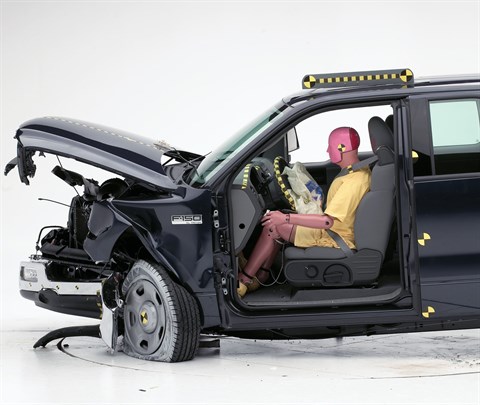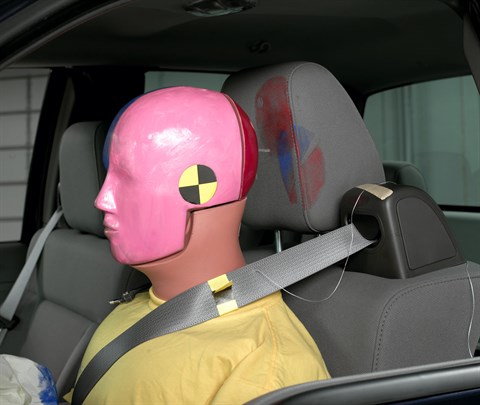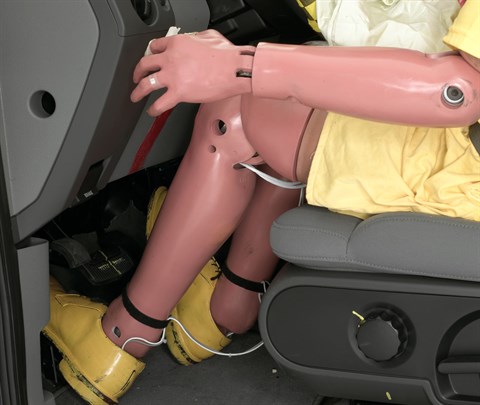Moderate overlap front: original test
Rating applies to 2004-08 models
Tested vehicle: 2004 Ford F-150 XL SuperCab short bed
The Ford F-150 was redesigned for the 2004 model year.
Note: This pickup does NOT share the same design as the 2004 F-150 Heritage, which was produced for only one model year. The 2004 Heritage shares the design of the older 1997-2003 F-150 pickup models, which were rated Poor overall in the 40 mph frontal offset crash test.
| Evaluation criteria | Rating |
|---|---|
| Overall evaluation | |
| Structure and safety cage | |
| Driver injury measures | |
| Head/neck | |
| Chest | |
| Leg/foot, left | |
| Leg/foot, right | |
| Driver restraints and dummy kinematics | |

Action shot taken during the frontal offset crash test.

The dummy's position in relation to the steering wheel and instrument panel after the crash test indicates that the driver's survival space was maintained well.

Dummy movement was well controlled. During rebound, the dummy's head hit only the head restraint, as indicated by smeared greasepaint.

Intrusion into the driver's space was minimal, and forces on the legs and feet were low.
Head restraints & seats
Seat type: Seats without integrated seatbelt
| Overall evaluation | |
|---|---|
| Dynamic rating | |
| Seat/head restraint geometry |
Seat type: Seats with integrated seatbelt
| Overall evaluation | |
|---|---|
| Dynamic rating | |
| Seat/head restraint geometry |
About the head restraint & seat test
Currently, IIHS tests apply only to front seats.
